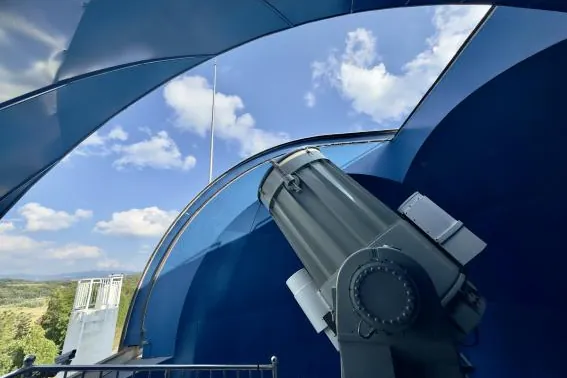
Shocking Discovery: Dark Matter-Free Dwarf Galaxy Upends Galaxy Formation Theories!
2025-04-15
Author: Amelia
Astronomers have made a groundbreaking discovery at the W. M. Keck Observatory on Maunakea, Hawai‘i Island: they have identified a dwarf galaxy, FCC 224, that appears to lack dark matter! This ultra-diffuse galaxy is situated on the fringes of the Fornax Cluster, approximately 60 to 65 million light-years from our planet.
This astonishing find poses a serious challenge to the established cosmological beliefs that dark matter is a cornerstone of galaxy formation. Until now, galaxies deficient in dark matter without any active star formation had only been observed in one other instance—within the NGC 1052 group. The implications of this new discovery suggest that such anomalies might be more common than scientists previously imagined.
Diving Deeper: Studies Unravel Mysteries of FCC 224
The peculiar nature of FCC 224 has been explored in two significant studies. The first, led by Doctoral Candidate Yimeng Tang from the University of California, Santa Cruz, was published in the Astrophysical Journal and delved into the galaxy’s intriguing globular star cluster system.
In a second study, Doctoral Candidate Maria Luísa Buzzo from Swinburne University and the European Southern Observatory examined the galaxy's dark matter content and possible formation scenarios, with findings published in Astronomy & Astrophysics.
Buzzo stated, "Globular clusters usually help estimate the amount of dark matter in a galaxy, but FCC 224 stands out with an unusually high number of luminous clusters paired with a notable absence of dark matter in its inner regions. Current galaxy formation models simply can't explain how FCC 224 exists as it does."
Unraveling the Mystery: Spectroscopy Reveals More
Buzzo's research leveraged high-resolution spectroscopy from the Keck Cosmic Web Imager (KCWI) to analyze FCC 224, drawing comparisons to other dark matter-free dwarf galaxies like DF2 and DF4. Her investigation aimed to establish whether FCC 224 belongs in the same enigmatic category.
Tang’s earlier findings used imaging from NASA's Hubble Space Telescope, unveiling that FCC 224's star clusters share characteristics with other dark matter-deficient galaxies. This correlation challenges the conventional models that explain galaxy formations.
The Need for Further Exploration
The KCWI's advanced capabilities allowed researchers to precisely measure the galaxy's stellar motions—a key indicator of its dark matter content. Tang pointed out that FCC 224 displayed extremely low velocity dispersion, a defining marker of dark matter deficiency.
Both Tang and Buzzo stress the importance of ongoing observations to unlock the secrets behind FCC 224’s formation. One promising hypothesis suggests an external catalyst, like a high-speed collision, may have led to a separation of dark and visible matter—this scenario is dubbed the 'bullet-dwarf model.' However, more data is essential to confirm this intriguing theory.
As Buzzo aptly noted, "FCC 224 represents a pivotal point in our quest to discover and investigate other dark matter-deficient galaxies. By broadening our sample, we can enhance our understanding of these rare celestial bodies and the elusive role of dark matter in shaping dwarf galaxies."









 Brasil (PT)
Brasil (PT)
 Canada (EN)
Canada (EN)
 Chile (ES)
Chile (ES)
 Česko (CS)
Česko (CS)
 대한민국 (KO)
대한민국 (KO)
 España (ES)
España (ES)
 France (FR)
France (FR)
 Hong Kong (EN)
Hong Kong (EN)
 Italia (IT)
Italia (IT)
 日本 (JA)
日本 (JA)
 Magyarország (HU)
Magyarország (HU)
 Norge (NO)
Norge (NO)
 Polska (PL)
Polska (PL)
 Schweiz (DE)
Schweiz (DE)
 Singapore (EN)
Singapore (EN)
 Sverige (SV)
Sverige (SV)
 Suomi (FI)
Suomi (FI)
 Türkiye (TR)
Türkiye (TR)
 الإمارات العربية المتحدة (AR)
الإمارات العربية المتحدة (AR)